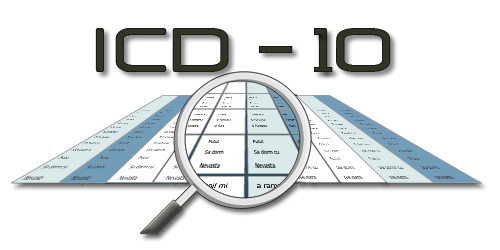Ophthalmology ICD 10 codes are designated for the various conditions related to the diagnosis of eye disease.
Ophthalmology ICD 10 Codes are used to represent the various treatments and diagnosis given by physicians on their patients for the purposes of reimbursements from insurance companies.
ICD 10 as compared to ICD 9 has added a bit of detail for describing the various diseases and disorders associated with the eye.
Age related in cataracts is classified in the same sub types in ICD-10 such as cortical, posterior and Sub capsular. The only difference as in ICD-9 is that they have been expanded to allow one to define which eye has been affected. The most used code in ICD-9 IS the unspecified senile cataract code which is equally vague in ICD-10. This code in ICD-10 will not allow one to specify which eye has essentially been affected.
These are some of the major ICD10 Ophthalmology codes that will be in use as from October 1st, 2014 to improve clinical financial and administrative performance for different eye conditions.
Ophthalmology ICD 10 Codes are used to represent the various treatments and diagnosis given by physicians on their patients for the purposes of reimbursements from insurance companies.
ICD 10 as compared to ICD 9 has added a bit of detail for describing the various diseases and disorders associated with the eye.
ICD 10 Ophthalmology Codes for Eye Conditions
ICD 10 Ophthalmology codes will be used to review various eye conditions such as glaucoma cataracts, DES, ARMD, retinal conditions and other injuries:ICD 10 Eye Glaucoma Code (H40.9)
Glaucoma is an eye condition that results in the optic nerve of the eye worsening with time. This condition is normally associated with increase in the buildup of pressure in the eye. H40.9 is the ICD code that has been designated for this eye condition. Some types will allow you to capture whether the glaucoma affects the right eye the left eye or both.ICD 10 Cataract Unspecified Code (H25.9)
Cataracts is a common eye condition that is known to be a major cause of blindness in many people. Cataract is the clouding of the lens inside the eye which normally results in reduced vision. H25.9 is an ICD 10 code that specifies unspecified age related cataract. The major difference in coding for cataract eye condition lies on the fact that the word senile in ICD-9 has been replaced with age related in ICD-10 and non senile replaced with infantile or juvenile.Age related in cataracts is classified in the same sub types in ICD-10 such as cortical, posterior and Sub capsular. The only difference as in ICD-9 is that they have been expanded to allow one to define which eye has been affected. The most used code in ICD-9 IS the unspecified senile cataract code which is equally vague in ICD-10. This code in ICD-10 will not allow one to specify which eye has essentially been affected.
Blindness and Low Vision ICD 10 Codes
Low Vision is a term used to refer to a significant reduction of visual function that cannot be fully corrected by ordinary glasses, contact lenses or any sort of medical treatment. Level of vision codes will also be predominant in ICD10; the only change is that ICD-10 will feature 17 codes in this case as compared to 16 in ICD-9.- H54.41 is an ICD-10 code that will be used to represent blindness to the right eye accompanied with normal vision to the left eye.
- H54.42 ICD-10 code on the other hand will be used to represent blindness to the left eye accompanied with normal vision to the right eye.
- H54.50 will be used to represent low vision on one eye accompanied with unspecified eye.
- H54.51 will designate low vision right eye accompanied with normal vision left eye.
- H54.52 be used in instances of low vision left eye with normal vision in the right eye.
These are some of the major ICD10 Ophthalmology codes that will be in use as from October 1st, 2014 to improve clinical financial and administrative performance for different eye conditions.






Post a Comment
Webmaster reserves the rights to edit/remove comments that is found irrelevant, offensive, contain profanity, serves as spam or attempts to harbor irrelevant links. Please read our Comments Policy for details.
Click to see the code!
To insert emoticon you must added at least one space before the code.